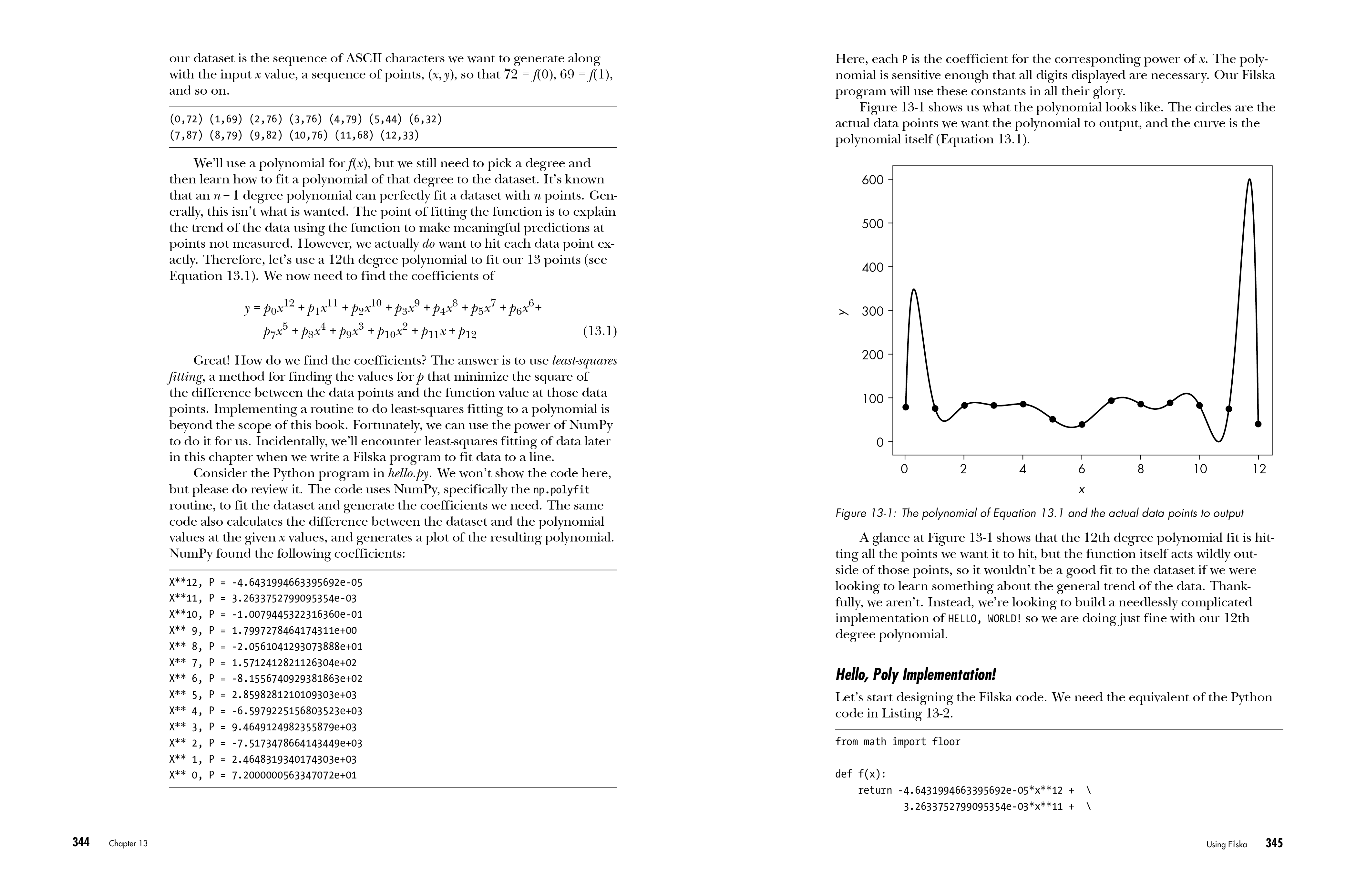Forward
Acknowledgments
Introduction
Part I: On Programming Languages
Chapter 1: A Cherry-Picked Review of Programming Languages
Chapter 2: The Essentials of Programming Languages
Chapter 3: Turing Machines and Turing Completeness
Part II: Atypical Programming Languages
Chapter 4: Forth
Chapter 5: SNOBOL
Chapter 6: CLIPS
Part III: Esoteric Programming Languages
Chapter 7: The ABCs of ABCs
Chapter 8: FRACTRAN
Chapter 9: Piet
Chapter 10: Brainfuck
Chapter 11: Befunge
Part IV: Homegrown Esolangs
Chapter 12: Filska
Chapter 13: Using Filska
Chapter 14: Firefly
Chapter 15: Using Firefly
Chapter 16: Going Further
Appendix A: Genetic Programming with Firefly
Index
Strange Code
Look Inside!
Download Chapter 10: BRAINFUCK
Strengthen your overall coding skills by exploring the wonderful, wild, and often weird world of esoteric languages (esolangs). Strange Code starts with a dive into the underlying history of programming, covering the early computer-science concepts, like Turing machines and Turing completeness, that led to the languages we use today. It then explores the realm of “atypical” programming languages, introducing you to the out-of-the-box thinking that comes from these unusual approaches to coding.
Later chapters address the even more unusual esolangs, nearly all of which are like nothing you’ve ever seen. Finally, author Ron Kneusel helps you develop and use two entirely new programming languages. You may not apply these languages in your day job, but this one-of-a-kind book will motivate you to think differently about what it means to express thought through code, while discovering the far-flung boundaries of programming.
You'll learn:
- How to program with pictures using Piet
- How to write two-dimensional programs in Befunge
- How to implement machine-learning algorithms using the text pattern matching language SNOBOL
- How to decipher Brainfuck code like [->-[>+>>]>[[-<+>]+>+>>]<<<<<]
- How to design and create two original programming languages
Learning to think in these languages will make you a better, more confident programmer.
"[No Starch Press] had me at 'esolangs' . . . I am almost always a fan of a book that talks about how to build a programming language. This one not only talks about some of the concepts involved in doing that, and shows how to build two custom languages (Filska and Firefly), AND talks about a few popular esoteric languages and how they warp your brain in a good way, it takes the unusual step of examining some languages that Kneusel describes as 'atypical,' which have some interesting and useful properties. His coverage of CLIPS, alone, is worth the price of admission here.
The knowledge gained here is foundational, and will help [you] with all sorts of different kinds of applications . . . I think every programmer should read it." (Read More)
—Ted Neward, "The Dude of Software," Principal, Neward & Associates; Technologist, Executive Leader, Speaker/Author
"A fascinating and thought-provoking tour through programming languages. Strange Code guides you through some mostly forgotten languages—such as Forth, SNOBOL, and CLIPS—before exploring more experimental languages—such as Piet—where your source code is an image. I particularly enjoyed Firefly, a language for the BBC micro:bit, created especially for the book."
—Sean McManus, Author of Mission Python: Code a Space Adventure Game!
"[Gives] a grounding in the basics of concepts like Turing Completeness without leaving readers to fend for themselves in a forest of of dense computer science arcana. As a reference and source for teachers, Strange Code has much to commend it."
—Terry Freedman, Teach Secondary magazine
Visit the author's GitHub page for code files and other resources.







